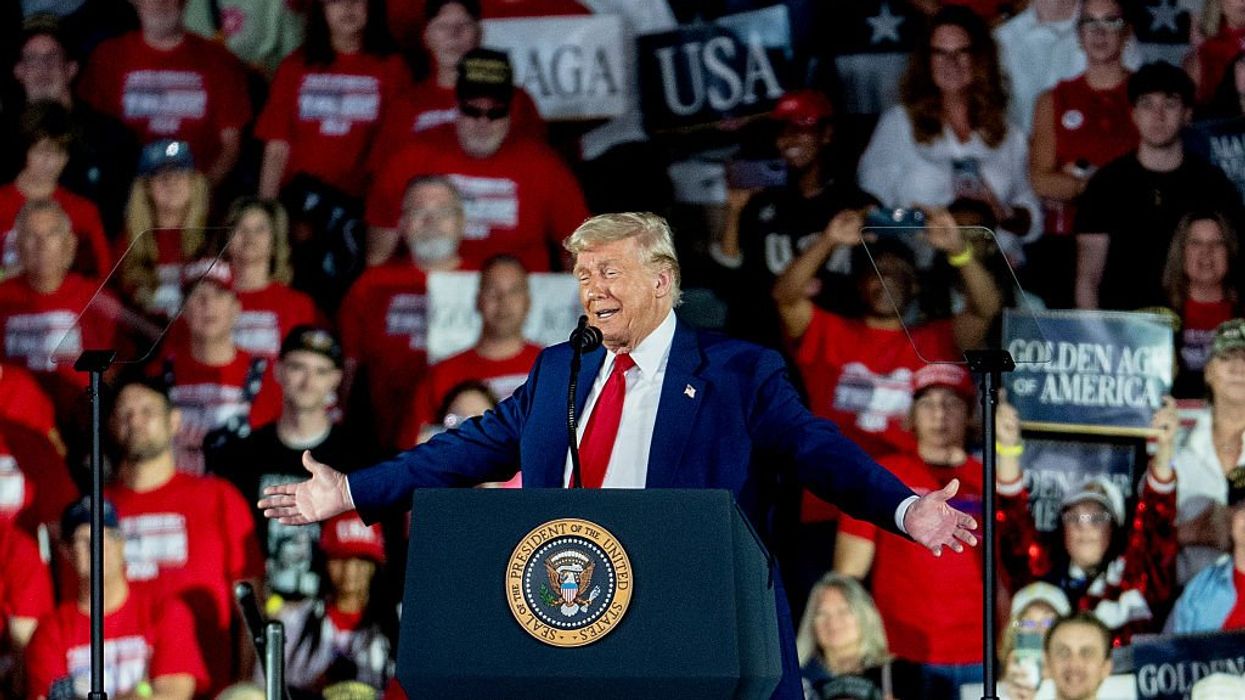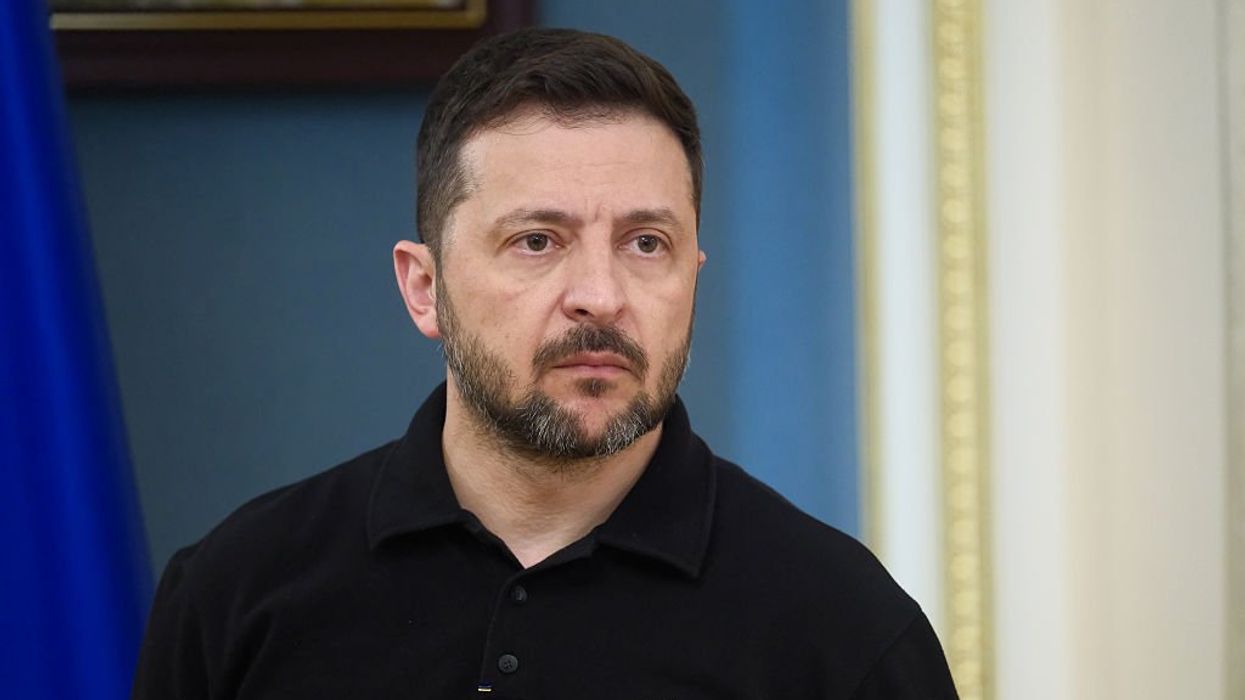Donald Trump reportedly said that, as president, he'll spend three days a week in New York City, away from the White House. The security measures alone would be enormous.
"The cost of securing the president in New York City is astounding," Glenn said Monday on his radio program.
However, expensive measures are nothing new when it comes to securing and shielding the president of the United States.
An underground train depot --- Track 61 --- was secretly built under the Waldorf Astoria Hotel for President Franklin Roosevelt and other VIPs to move in and out of the city as discreetly as possible. Primarily a mechanism to hide FDR's disability from the public, the secret station also provided a way to quickly remove him in the event of a crisis.
Read below or watch the clip for answers to these questions:
• What would be the impact on regular citizens if Trump stayed in the city three days a week?
• Why did Track 61 use a dual train system for President Roosevelt?
• Did Donald Trump once request a no-fly zone over his Mar-a-Lago property?
• Is Track 61 still in use today?
Below is a rush transcript of this segment, it might contain errors:
GLENN: Have you guys heard that Donald Trump has said that he's going to spend three days a week in New York away from the White House? That can't be. You can't secure the Trump Tower. How?
PAT: It's in the middle of Manhattan. I don't know how you --
GLENN: It's a big glass building in the middle of Manhattan.
PAT: Yeah. Yeah, I don't know how they do that.
GLENN: On Fifth Avenue.
PAT: First of all, it would shut down New York.
GLENN: It would shut down Fifth Avenue. At least that block of Fifth Avenue.
PAT: Look what happened every time Obama came to --
GLENN: It was a nightmare. It was a nightmare.
PAT: Oh, my gosh. It was horrific
STU: The expense -- I mean, seriously, in less than one day, he would spend all the money he's saving on his salary. And it would be like an hour of security.
GLENN: Yeah. No. It's -- to get the president in and out of New York -- first of all, underneath the Waldorf-Astoria, they still -- it's my understanding, they still have the dual train engines waiting for him.
So underneath the Waldorf-Astoria, which is where President Roosevelt selected, there is a train station. It's right -- it's right on the way to Grand Central Station. And you have two engines. Two full train engines, locomotives. And every 45 minutes one is powered down as the other one powers up.
So you have to -- so they don't overheat, you have to have two of them. Every 45 minutes, switching which one is -- which one is running. And it has to run all the time. And it is a special track just for the president. In case there's a problem, you get him to the Waldorf-Astoria. You get him down to the train tracks. And he's thrown on one of those trains, and it takes off.
And that's just one of the escape routes for the president.
JEFFY: Right.
GLENN: I mean, the cost of securing the president in New York City is astounding. And, you know, here's the other thing: Donald Trump has got to be loving this. When he bought Mar-a-Lago, he didn't like the fact that planes were flying over Mar-a-Lago, and so he told the airport he wanted the flight pattern changed. And they all said, "Who do you think you are?"
JEFFY: There's been an ongoing lawsuit.
GLENN: Yeah. They weren't ever go to go change it. And they were really angry at him, that he would have the balls to say that. Now, he can say, "I'm the president of the United States. You're changing the flight plan."
JEFFY: Yeah. Pretty much they have to.
PAT: Well, I think Secret Service --
GLENN: Yeah, I'm sure it's already done.
PAT: The Secret Service will do that. Yeah. So he got it done.
GLENN: Yeah, it's already done.
So now he's got his land value back.
JEFFY: This is the only reason he ran for president.
(laughter)
GLENN: Oh, man -- think of -- think of the rental property -- the rentals after he's president. Think of how much Trump Tower is worth now --
JEFFY: It doesn't matter. He said --
GLENN: It used to be the -- the New York White House during the Trump administration.
JEFFY: He said in the 60 Minute interview last night that occupancy rates doesn't matter to him. Any of that, it doesn't matter to him.
GLENN: Oh, I would move out of Trump Tower now, if he was going to live there. Because of just the hassle. Even if I was the biggest fan in the world, oh, my gosh, I'm not having my building shut down over and over and over again because of Secret Service. That's going to be a hassle for all of those people that paid a lot of money to live in Trump Tower.
PAT: Yeah.
[break]
GLENN: Just looking at the pictures of the train depot underneath Waldorf-Astoria. Apparently --
JEFFY: A lot of cobwebs?
GLENN: Apparently they don't do that anymore. Which is good news. I can't imagine what that cost.
PAT: They don't do that anymore.
GLENN: But it shows the empty train tracks and one of the cars that is still sitting there.
PAT: Well, since --
GLENN: That's a good thing. This was built for FDR for -- because he didn't want to show his disability.
PAT: And it was back in the day when the Waldorf-Astoria was somebody.
GLENN: The Waldorf-Astoria is the -- is the place that is still the place that the president goes to stay. Now, that will change with Trump Tower. But Barack Obama --
STU: Really?
GLENN: Yeah.
PAT: Obama stayed at the Waldorf-Astoria?
GLENN: Yeah.
PAT: Did he really?
GLENN: Yeah. Waldorf-Astoria. So did George Bush. So did Bill Clinton.
PAT: Wow. Somebody needs to introduce these guys to a nice hotel.
(laughter)
GLENN: It was the one built at the time -- oh, I'm sorry, the Waldorf is so horrible.
PAT: Come on, you know better than that. You know the Waldorf is not what it once was.
GLENN: It's a Hilton. No, it's a Hilton.
PAT: It's a Hilton hotel now.
GLENN: But the Waldorf has other sections of it. It's a very large hotel.
PAT: Yeah, that's true.
STU: I was surprised, one of our recent business trips, we went up there --
JEFFY: You didn't stay in the special section, Pat?
PAT: No.
STU: So we'll go up there and there will be like -- we usually will all like book maybe, you know, potentially in the same hotel. Or someone will book it for us. It was a last-minute trip that we had to take. So I went on Orbitz or something and just tried to book a hotel. And the Waldorf-Astoria popped up as one of the cheapest ones --
GLENN: It's huge. It's huge.
STU: Yeah. Yeah, I guess that's why.
GLENN: It's got tons of empty rooms. Because it's huge.
PAT: Did you wind up staying there, Stu? Did you wind up staying there?
STU: Yeah, I did.
PAT: Was the room extraordinary, like wow, the Waldorf-Astoria?
GLENN: Was it good?
PAT: No, it's not.
STU: It was nice.
GLENN: It's nice, but it's an old hotel --
PAT: It's okay. It's a Sheraton hotel. It's a Hilton hotel.
GLENN: It's a Hilton. Yeah.
STU: Yeah.
JEFFY: Oh, you can't stand it. Hilton.
GLENN: Like you can't have the president stay at a Hilton.
PAT: Well, you can't. I mean, they don't. Let's be real about it.
GLENN: Yes, you can -- we should.
JEFFY: Thank you.
PAT: We don't.
GLENN: We should.
Featured Image: The Waldorf Astoria, 1899, Library of of Congress (Photo: Wiki Commons)









